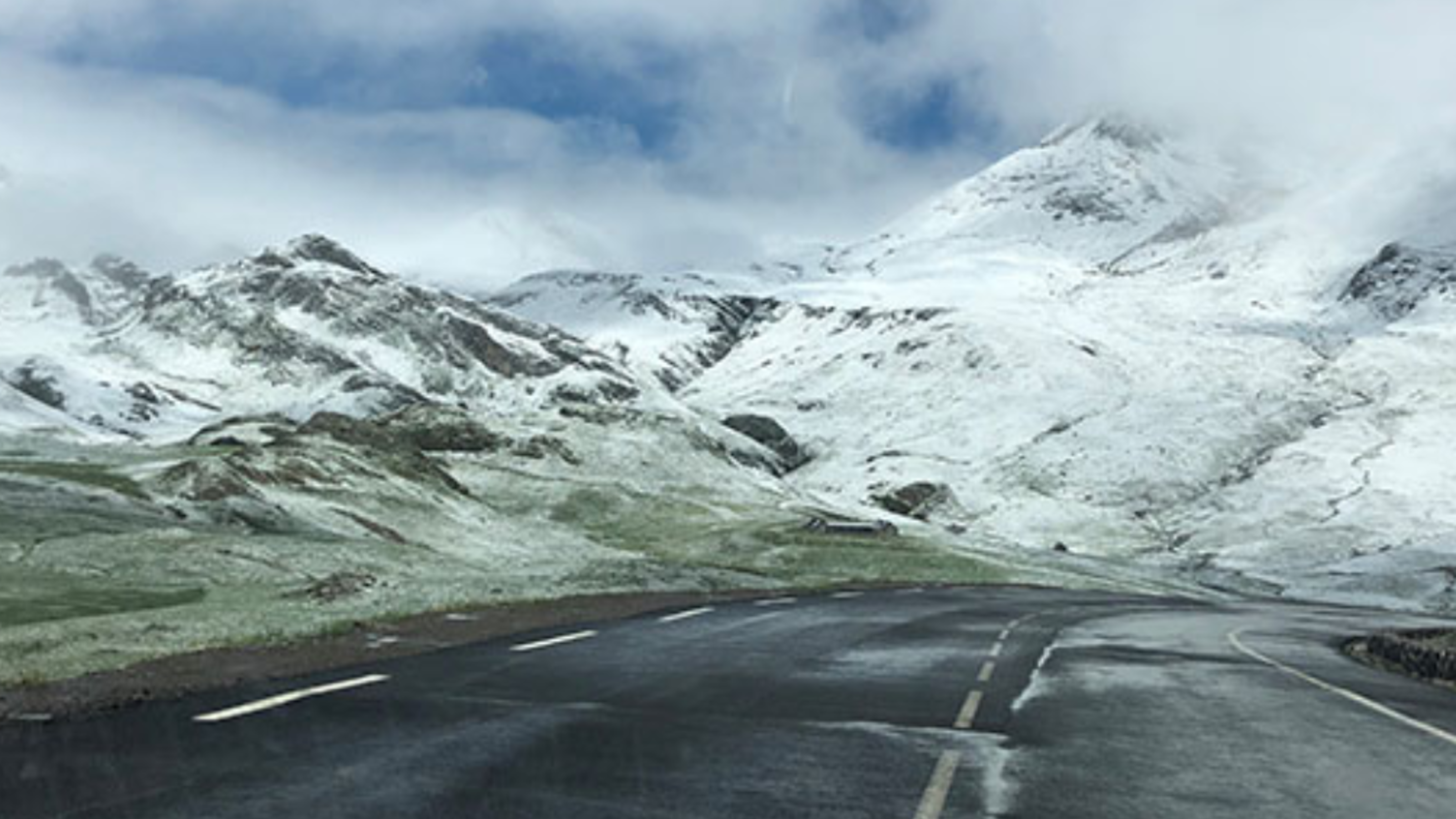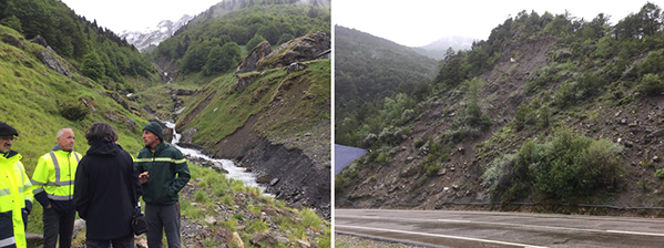Site visit to the Pyrenees

As part of PHUSICOS WP2, Idoia Aruzo and Juan Terradez from CTP organized a site visit to the proposed NBS sites in the Pyrenees on June 4 and 5. Anders Solheim and Vittoria Capobianco from NGI represented PHUSICOS WP2.
In addition to CTP and NGI, the visit involved a number of participants from various involved organizations, the PHUSICOS partners BRGM, Risque R&D, and CREAF, the regional end-user organizations EGCT, ONF, PVLG and relevant regions and municipalities. The five sites represent several different hazards, such as snow avalanches, torrents, landslides, rock fall and erosion.
Left: The confluence zone between the Bastan and the Gavernie rivers, where recent flooding has deposited much sediments. Right: Visit in the village of Baréges, France. The deputy Mayor in the middle right (with white shirt).
The five proposals from the Pyrenees are located in two main regions. Two of the sites are in the Bastan Valley, whereas the three others are along the important trans-national road A-136 (Spain) / RD-934 (France). The Bastan Valley was visited on Tuesday 4. June. The proposed measures are related to snow avalanches and torrents. Snow avalanches pose a serious hazard to the village of Baréges, where they threaten both parts of the village and also a military training facility in the outskirts of the village.
NBSs to be implemented are revegetation of avalanche release areas, with plant protection by wooden structures until plants grow strong enough to serve their purpose without protection. Regarding torrents along the Bastan River, two measures are proposed. The first is a modification of the river course along a ca. 1 km long stretch. The long profile of the river is to be changed into a step-pool shape, using only local rock material, to reduce the speed and thereby the erosive power of the river. The cross profile will also be changed, emplacing erosion protection, as well as establishing terraced banks, with grazing potential for sheep.
Left: Discussing NBS at the ravine at Socques, France, where torrents erode in the till deposits, and cause severe problems for the road. Right: The problematic end moraine (loose till slope) at Santa Elena, Spain.
The second measure is at the confluence of the Bastan River with the main Gavarnie River. At this point, the plan is to provide more room for the river by removing a built, concrete point on the river bank, and establish a green barrier some 10-12 m further inland. This will prevent deposition and potential change of river course at this confluence between the two rivers.
The proposed measures along the trans-national road were visited on Wednesday 5. June. The first visit was to the end moraine cut at Santa Elena, Spain. This till slope is a high risk part of the road due to falling rocks from the exposed slope, combined with poor visibility for traffic from the north. The proposal is to re-vegetate the slope in terraces, using local bush and shrub vegetation.
The two other sites along the road are located on the French side. Torrents in a ravine at Socques are highly erosive. They transport large amounts of sediments, which clog the culvert under the road and lead to overflow and damage to the road. The proposed measures here include forming a stepped long-profile of the ravine, with at least two check dams, made preferentially of timber, to retain eroded sediments, in addition to erosion protection along the ravine and enlarging of the culvert under the road.
The third site along the road is at Artouste, where rockfall is the key problem, and has also caused one fatal accident. The proposed measure at this spot is to first clear the slope for loose blocks, then establish wooden structures along the identified release areas for rockfall, followed by forest maintenance to increase the protective effect of the forest in the slope.
In addition to the five proposed sites, we also had the opportunity to visit two other sites, where terracing and revegetation were implemented more than 100 years ago, in Biescas and at Canfranc, both in Spain. These are large measures, covering entire valley sides. They are no longer visible from the distance, but have an important function. These measures serve as inspiration for the proposed PHUSICOS measures.
Each of the five proposals may seem small, but it is important to emphasize that the potential consequences of serious events in both the two areas are severe. These are important tourist destinations (ski resorts and thermal health baths), and the roads are busy and important, not the least for passing between the two countries. Furthermore, the roads are the only transport lines in these valleys. Detours will be extremely long or impossible, so the consequences for societal security are even more severe in the case of closed road.
As for the previous PHUSICOS site visits, the importance of the being at the sites, see the problems, and being able to discuss with local stakeholders cannot be overestimated. Despite quite variable weather, from 30 °C on Tuesday to snow at Portalet on Wednesday, the visit was very useful in order to understand the problems faced at these sites.

Left: The confluence zone between the Bastan and the Gavernie rivers, where recent flooding has deposited much sediments. Right: Visit in the village of Baréges, France. The deputy Mayor in the middle right (with white shirt).

Left: Discussing NBS at the ravine at Socques, France, where torrents erode in the till deposits, and cause severe problems for the road. Right: The problematic end moraine (loose till slope) at Santa Elena, Spain.